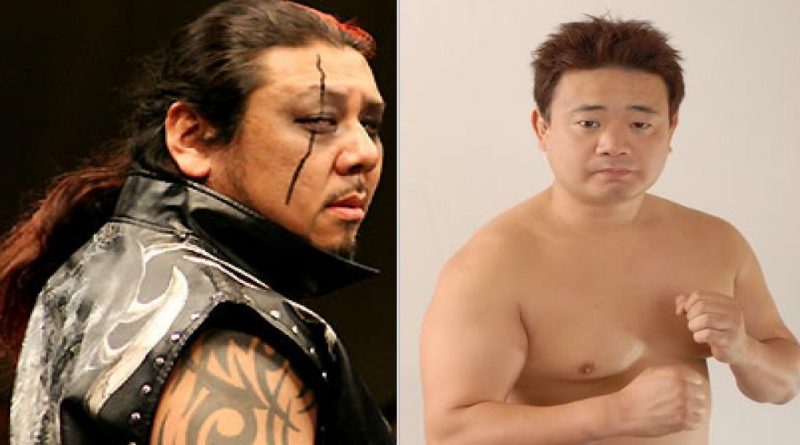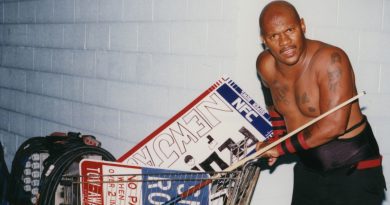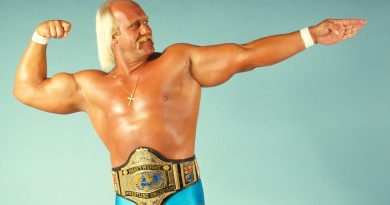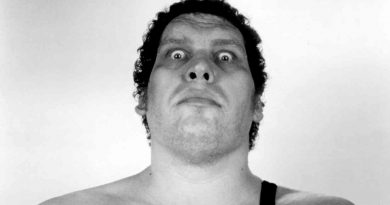Nobukazu Hirai vs Yoshikazu Taru
The fight between Nobukazu Hirai and Yoshikazu Taru was a huge, mainstream story in Japan. Its significance had lasting effects politically, that may, along with the recent injury to Katsuyori Shibata, finally lead to permanent changes in Japan in regards to head and brain trauma.
Fight: Nobukazu Hirai vs Yoshikazu Taru
Date: May 29, 2011
Location: Kobe Sambo Hall in Kobe, Hyogo, Japan
Source: Cagesideseats.com, Nikkan Sports, Puroresu Power, Wrestling Observer Newsletter
There’s a lot to cover here, so let’s first set the tone and give the background leading to the incident. Fact is, this story isn’t about the fight itself, of which we don’t have many details of. This story goes far beyond that, as it drastically affected the careers and lives of so many people, and was a public relations nightmare for All Japan Pro Wrestling.
The Cast
Nobukazu Hirai was 41 in 2011, and began his career in 1990 working for Genichiro Tenryu’s short-lived Super World Sports promotion. SWS had a brief working relationship with the WWF, and prior to the Monday Night Wars, may have been the only promotion ever acknowledged on WWF television since Vince McMahon Jr took over the company in 1983.
Hirai got into pro wrestling against his father’s wishes, as he himself wrestled as Mitsu Hirai for All Japan in the 1970s. Hirai Sr didn’t even know his son was training to be a pro wrestler, and only found out about it by reading the newspapers in Japan. Hirai Jr later worked for WAR in the 1990s, and spent most of the 2000s working for All Japan.
In the 2000s, Keiji Mutoh was running All Japan. The company seriously lost its way after Giant Baba, who ran All Japan forever, passed away in 1999. His widow, Motoko Baba, ran the company into the ground until Keiji Mutoh secured financial backing and purchased the company from her in 2001.
At the time of this incident, Hirai was in a stable called the Voodoo Murders with Yoshikazu Taru, Minoru Tanaka, Masayuki Kono, and Mazada. Taru was also a veteran, being five years older than Hirai, which would make him 46 when this all took place. Hirai wrestled under the name Hate during his time in the Voodoo Murders, and later it was changed to Super Hate.
The one name who will be recognizable to American fans (aside from Keiji Mutoh, who wrestled for the NWA/WCW as Great Muta) is Kenzo Suzuki. Suzuki wrestled for WWE for awhile, and in All Japan was simply known as Kenso.
The significance of Kenso to this story should not be glossed over. You’ll soon find out why.
Background
An overlooked part of this story is that Hirai had a match with Kenso on May 22, and in that match Hirai took a brutal chair shot to the head. Kenso has always had the reputation of a somewhat sloppy worker, and in Japan, there are no rules or sentiments about blows to the head like there are in the US. Hirai suffered a concussion from that chair shot, exactly one week before the fight with Taru. In addition, Hirai was taken to the hospital after that chair shot, and it required seven stitches to close the cut.
As we’ve seen with Bret Hart, Shibata, and others, there’s a delayed effect when it comes to head trauma. Bret still worked after that hard kick to the head by Goldberg, working a stiff hardcore match with Terry Funk afterwards on WCW Thunder that may have contributed to his eventual stroke.
The Japanese also have a much stronger mentality of working while injured, more akin to US pro wrestling in the 1970s and 80s when guys would work hurt. It was always a sign of weakness to speak up about not working with injuries, plus in those days there were no guaranteed contracts and if guys didn’t work, they didn’t get paid. Today, with lawsuits and contracts, and more knowledge about injuries and recoveries, things are thankfully different.
The point being is that Mutoh should’ve pulled Hirai off all shows following the concussion suffered at the hands of Kenso. Instead, he still worked all shows that weekend, which is inexcusable. Truth be told, there never should’ve been a chair shot to the head in the first place, even back in 2011. While we know a lot more in 2017 than we did in 2011, we still knew enough in 2011 than we did in, say 1997. It’s one thing for a hard chair shot to slip into a match. It’s another for a guy to suffer a concussion and still be expected to work.
Then again, WWE booked Brock Lesnar to open up Randy Orton’s head with hard elbows. And that was in 2016. We still have a long way to go.
The Confrontation
Hirai was at the building with this stablemates in the Voodoo Murders before most of the office staff had arrived. Taru asked the ‘gaijin’ (ie foreign wrestlers) to leave, and closed the door. It is believed the gaijin there at the time were Joe Doering and Renee Dupree. Minoru, Kono, and Mazada all stayed with Taru and Hirai in the room.
Between the few witnesses there and the language barrier in all the translations, it’s not exactly certain what took place next. It is believed Taru confronted Hirai about not setting a good example for the younger talent. In particular, Taru may have brought up Hirai’s alleged drinking problem and laziness in the ring. Whatever was said, it escalated into a shouting match.
What we know is that it got physical, and Taru beat Hirai badly with repeated blows to the face and head. He shouted at one point, “Bring the pipe!” (in Japanese) but thankfully didn’t get a chance to use it. Minoru, Kono, and Mazada did absolutely nothing to break it up, and they just watched it happen. It was All Japan referee Kyohei Wada who rushed in there to break it up.
Whether or not Taru planned on beating Hirai from the start, or whether it only turned that way because the arguing escalated, is unknown. Whoever threw the first punch is also unknown. If Taru made sure the gaijin weren’t there, it would lead one to believe it was a planned attack. However, given the personal and potentially embarrassing nature of the conversation (drinking, workrate), perhaps Taru just wanted it to be between the boys and his stablemates. Only Taru and perhaps the others know for sure.
The Incident
If the story had ended right there, it would’ve been bad enough. But the worst was yet to come.
Despite the savage beating he took backstage at the hands of Taru, Hirai still had his planned match with Kenso later that night. To make this even weirder, Taru accompanied Hirai to the ring and stayed in his corner. After all, they were stablemates in the Voodoo Murders.
Imagine you are Hirai. You’re 41, and your body is already banged up from two decades worth of bumps and bruises. Then you get a concussion from a hard chair shot, which opens you up to the point you need stitches. With those stitches, and with that concussion, you keep working and don’t miss any matches. Days later, you’re beaten in the dressing room, with repeated blows to the head, while your coworkers stand by and do nothing. After all that, you still have to wrestle that night, and the guy who pounded your head in has to escort you to the ring.
This was all a recipe for disaster. The human body can only take so much, and the human brain can take even less. This was not going to end well.
And it didn’t.
At some point during the match with Kenso, Hirai collapsed. He wouldn’t get up, and had to be helped to the back (ironically Taru was probably one of the guys helping him). When he got backstage, he got sick, and the stuff that came up was black. Then he collapsed.
Hirai was rushed to Kobe University hospital, and they said he had suffered an acute subdural hematoma. They performed an emergency craniotomy, or basically brain surgery.
The surgery was deemed a success, and he was given a ventilator to help him breathe. He was later taken off the ventilator and able to breathe on his own. While initial reports had him responding to certain commands, later it came out that he wasn’t responding and remained in a coma to the point everyone was seriously worried.
As Hirai lay unconscious in a hospital bed, all Hell was breaking loose in All Japan.
The Aftermath – Part I
Word got out about what happened, and the Japanese sports media was furious. Furious that a veteran was beaten up backstage, that he wasn’t pulled from his match with Kenso that night, and that Keiji Mutoh, as the president, hadn’t made any public statements immediately.
Three days after the beating, All Japan held a press conference to explain what happened and that Taru was suspended indefinitely.
But it was too late. The damage had been done, to the point anything All Japan and Mutoh could’ve said or done would’ve been met with harsh criticism. It turned into a really big mainstream story, and became a public relations nightmare with fears that the police would get involved.
As public pressure continued to mount in the ensuing days, All Japan suspended the other three members of the Voodoo Murders: Minoru, Kono, and Mazada. While those men were not implicated in doing anything physical to Hirai, they were punished for doing nothing to break up the altercation. Internally, the feeling was that even though Hirai was not exactly popular in the locker room, what happened to him was inexcusable. There were already rumblings that the family of Hirai and Taru were in talks over some sort of settlement.
The suspensions of the four men involved did little to pacify the media. It was going to take a major change on top in order to stop the bleeding.
All Japan held another press conference was held on June 7, and Keiji Mutoh announced he was resigning from his position as president of All Japan. He really had no choice.
Mutoh said he’d remain as an active performer, but at his age (48) and with his knee problems, he wasn’t working a full schedule. Others noted that Mutoh was burning out from the position anyway, as it had now been a full 10 years since he took over as president of the struggling All Japan promotion.
Masayuki Uchida, who was a member of the Board of Directors for All Japan, was announced as the new president. Uchida was not a pro wrestler, and Mutoh retained his own office position on the Board. Uchida was one of the people who reported Hirai was responsive following brain surgery, which later turned out to be false.
At the press conference, Mutoh accepted full responsibility for the incident, as he should have. But again, it was too little, too late.
The Aftermath – Part II
Speculation began over what really caused the problems between Hirai and Taru. Insiders believed tension had been brewing for awhile, and that there may have been business dealings between the two that led to problems. Specifically, some wrestlers in Japan were paid via how many tickets they sold (much like in the US where musicians are often paid based on how many tickets they sell to family and friends), and there may have been issues between the two there from the Kyushu tour in May.
Others reported that Hirai showed up to the Kobe show inebriated (this was the show in which the fight took place), which may have led to Taru deciding to finally do something about it. Surely Taru knew Hirai had just gotten stitches in his head for the chair shot a week earlier, and didn’t seem to care. Assistant booker (and wrestler) Kaz Hayashi, who some of you may remember on WCW Nitro from the Monday night wars, was speaking with as many people as possible who were there that night, to try to piece together what happened.
With all the suspensions, the Junior championship and World tag team championship were vacated. Battle royals were added to the cards because of how much the roster had been trimmed. The June 12 show drew only 800 fans, which was considered a disappointment. The June 19 show at Sumo Hall, which was a major show for All Japan, drew 6,000 fans (announced as 8,000) and that was considered pretty good considering all the negative press the company had been receiving.
The suspensions of Kono, Minoru, and Mazada ended on July 9, although Kono didn’t come back right away due to elbow surgery. They largely resumed their roles, as All Japan by this point was desperate for any star power they could get. Taru was eventually fired altogether, and the Voodoo Murders faction was disbanded. Taru did come back years later.
In November, a full six months following the attack on Hirai, both Taru and Mazada were arrested for their roles in the altercation. It is not known why Mazada was arrested instead of Kono and Minoru, so the police clearly had reason to believe he played a bigger role than originally thought.
In addition, Taru was fined 300,000 yen ($3,840) and Mazada was fined 200,000 yen ($2,560). There would’ve been more significant charges, but the prosecutor and judge didn’t have enough evidence to do so. The only person who would’ve been able to provide the most evidence was Hirai, and by this point, he was still in a coma six months later.
Hirai did make improvements and has come out of his coma since then. We couldn’t find much in the way of details as to his current condition, other than he has vowed to return to wrestling (he hasn’t, and shouldn’t). Hirai and Taru did make amends later on, although to what extent we do not know.
Conclusion
While hindsight is always 20/20, there were glaring mistakes that didn’t take a lot of common sense to avoid. First was the chair shot. There were times in the 90s when wrestlers in the US would take hard chair shots at a Sunday PPV (for example), and despite being shaken up, were still asked to wrestle the next day. The difference with Hirai is that he was opened up and stitched together, and diagnosed with a concussion at the hospital. Logic says he shouldn’t have wrestled that week, but he did. Mutoh deserves blame for that, as does everyone else in his inner circle who didn’t try to prevent it.
Second was the altercation. For one, if Hirai had a drinking problem that was affecting his performance, the company should’ve addressed it long ago. Second, while Mutoh could not have prevented the fight, he should’ve made a public statement the very next afternoon at the latest. Again, this is common sense.
Third, and most glaring of all, a guy who was beaten that badly backstage should not have wrestled that night. It’s not the first time a wrestler has gotten into a fight and then wrestled later that evening (often wrestling the guy he had a fight with), but in those cases the beating was never as severe as this one was. Especially for a guy who just had a concussion a week prior. It’s really mind boggling the lack of leadership and decision making here.
Sadly, the head trauma is still a problem in Japan (and Mexico), where chair shots still occur, although far less frequently. Headbutts are common, usually worked, however we just saw with Shibata that skull-on-skull head collisions are somehow still permitted. As of this writing, Shibata’s career may be over, and even if his injuries are storyline (it’s believed they’re not storyline thus far), he still bled from the head in the match and the sound of the heads colliding was said to be all too real.
The irony is that Japanese wrestling has traditionally been progressive and led the United States when it came to in-ring action and overall trends. Terry Funk used to always say that if you want to see how wrestling in the US will look in the future, just look at Japan. In some ways that’s still true, and others it’s no longer the case. For head trauma, chair shots, and stiff headbutts, the US has led the way and the other countries are still lagging behind.
If there’s one positive from the Chris Benoit tragedy, it’s just how serious head and brain injuries can be. The work of former WWE wrestler Chris Nowinski, which has extended into football as well, helped bring this issue to the forefront. The premature retirement of Daniel Bryan was also an eye-opener. Just last week, when Finn Balor received a concussion in a match with Jinder Mahal, he was pulled from the house shows and only allowed to wrestle again once he was cleared. This is a good thing that wouldn’t have happened in the past.
Improved neurological testing has also helped this safety movement, as have the multiple class actions (lawsuits) filed by a plethora of former WWE wrestlers and NFL players.
Still, as the Orton vs Lesnar angle showed, we still have work to do. The Hirai-Taru incident is a sad display of the pro wrestling “tough guy” mentality at its worst. It’s scary to think how those kinds of things happened all the time in the 1970s, when bar fights were a nighty occurrence and nobody knew anything about the effects of concussions. In the 80s, it was more about drug use and working while injured, which magnified injuries and a reliance on pain pills. That epidemic continued through the 90s and early 00s, when we started seeing the results of the excess with the endless deaths of wrestlers at young ages.
Going forward, with drug use no longer the crisis it once was, the biggest risk for pro wrestlers today remains head trauma. We still don’t know a lot about how much damage is really being done, and one has to wonder how many guys would be forced to retire if they too went through as much extensive testing as Daniel Bryan did. And Bryan will probably wrestle again when his contract expires.




